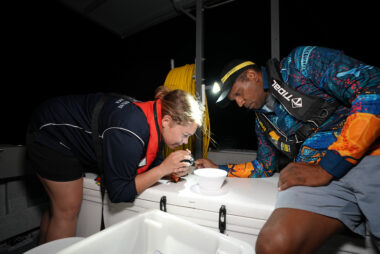Researchers have uncovered new clues about a mysterious immune-modulating protein with the ability to resolve inflammation in a variety of diseases including inflammatory bowel diseases, rheumatoid arthritis and those at risk of heart attack.
In the preclinical study, published in the prestigious British Journal of Pharmacology, the Monash University team have described significant new insights into the Formylpeptide receptor 2 (FPR2), a member of the G-protein coupled receptor (GPCR) family which has been shown to regulate and resolve inflammation (nature’s way of healing).
Senior author and Head of the Cardiovascular Pharmacology Laboratory at the Monash Institute of Pharmaceutical Sciences (MIPS), Dr Chengxue Helena Qin, said it’s important for drug discovery researchers to understand the pharmacological characteristics of the “promiscuous” FPR2, so as to maximise its full potential.
“There’s increasing interest in progressing the development of FPR2 small molecules due to their exciting ability to cause inflammation while also being capable of promoting the healing process after inflammation takes place,” Dr Qin said.
The study describes four FPR2 drugs, with the emphasis on two small molecules which have entered Phase 1 clinical development as potential therapeutics for the prevention of inflammation.
The first molecule (BMS-986235) has shown to protect against heart attack by resolving inflammation, while the other (ACT-389949) has shown to cause rapid tachyphylaxis (a rapid and sudden decrease in response following administration).
The study’s first author and MIPS researcher Selena Peng said the study has characterised the differences between the four drugs including their signalling and protein coupling profile and predicted the ways they interact with FPR2.
“Preclinical studies demonstrated that ACT-389949 does in fact differ from BMS-986235 in their signalling and protein coupling profile, which is a significant insight into identifying the optimal profile for FPR2-based pharmacotherapy and, ultimately, aid the design of the next generation, safer and more effective drugs to target a broad range of inflammatory diseases,” Ms Peng said.
This finding highlights a crucial distinction in the signalling and protein coupling profiles between ACT-389949 and BMS-986235, both of which are FPR2 agonists. Preclinical studies suggest that these two compounds interact with the FPR2 receptor differently, affecting the downstream signalling pathways and protein interactions that are activated upon binding to the receptor.
Consequently, the distinction between ACT-389949 and BMS-986235 in their signaling and protein coupling profiles offers a roadmap for refining FPR2-targeted therapies, enhancing their effectiveness and safety, and expanding their application to a wider array of diseases.
“The insights gained from these studies provide a foundation for the rational design of the next generation FPR2-targeting drugs. By knowing which signalling pathways are more beneficial or harmful, researchers can engineer drugs with optimal profiles, improving the likelihood of clinical success,” Ms Peng concluded.
Contact details:
Kate Carthew
0438 674 814

